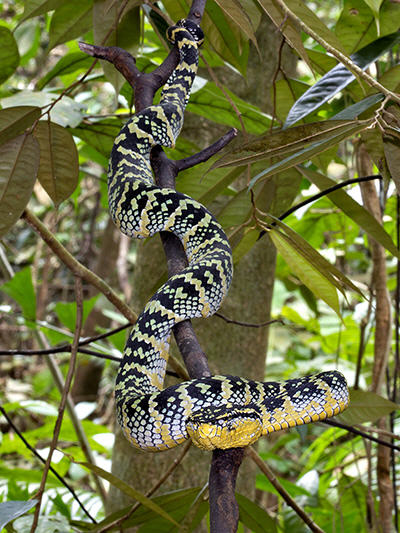
Fig 1
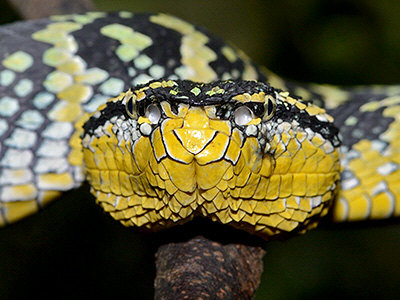
Fig 2
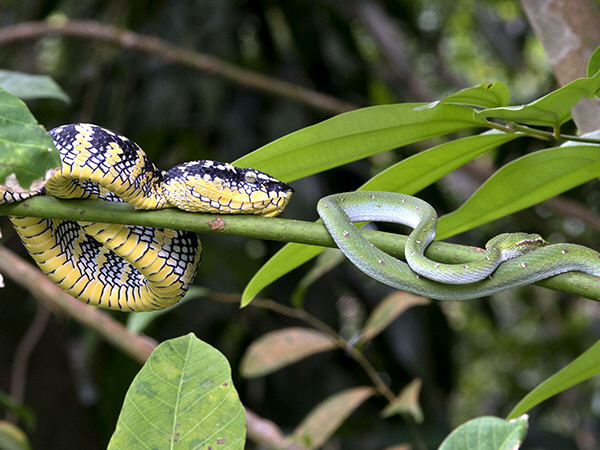
Fig 3
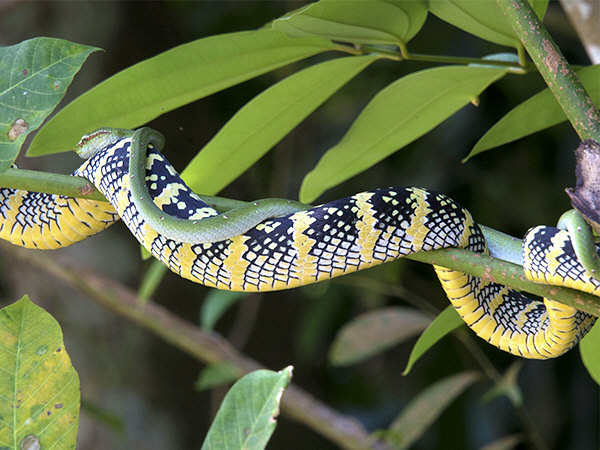
Fig 4
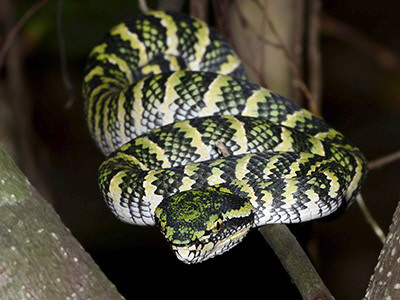
Fig 5
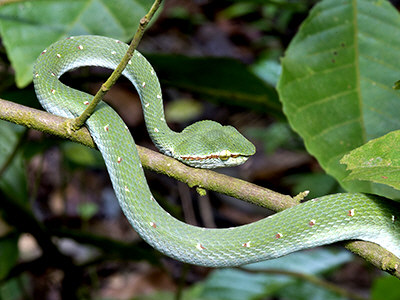
Fig 6
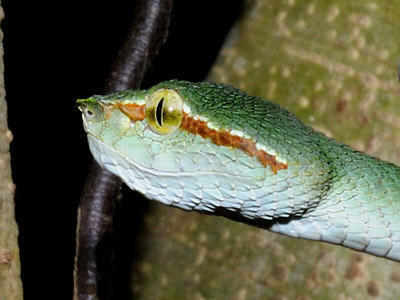
Fig 7
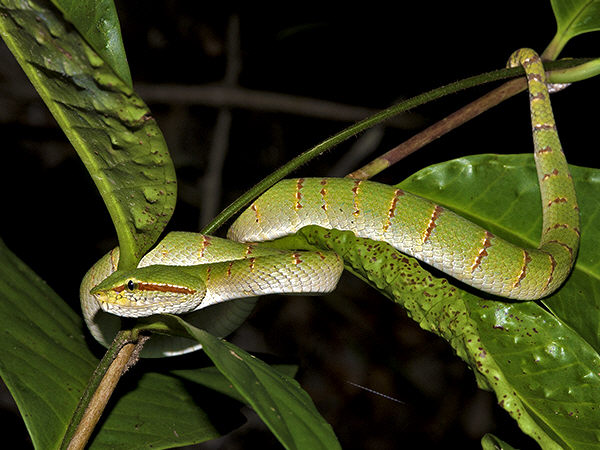
Fig 8
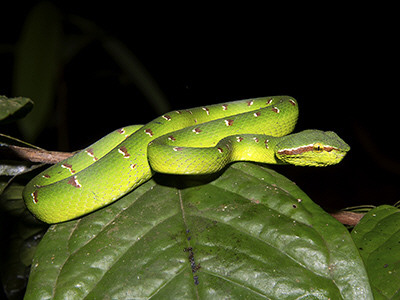
Fig 9
|
Family : VIPERIDAE
Species : Tropidolaemus wagleri
Maximum Size : Females 92 cm, males 52 cm
Wagler's Pit Viper, or
Temple Pit Viper, is perhaps the commonest pit viper in Southeast Asia. It
occurs in lowland forest, either primary or secondary, and in some coastal
regions may occur in mangrove.
Pit vipers are all venomous, however Wagler's Pit Viper is generally not
considered to be aggressive. In the field, these snakes are most easily
identified by their markedly triangular head.
Wagler's Pit Viper is generally found resting on low vegetation, but a
careful search may also locate the species at mid-canopy level many metres
above the ground.
Individuals may remain on the same branch for many days, either as they
digest a recent meal, or as they lie in wait for their next meal. Prey is
detected at night by means of the heat-sensing pits which occur on either
side of the head. Rodents, such as arboreal rats, and birds reportedly
make up the bulk of their diet.
Juveniles and males have a slender, lime green dorsum sparsely patterned
with pairs of small coloured spots or short bars either side of the
vertebral line: these spots or bars are partly red and partly cream (longer
bars indicate a juvenile female). There is a bicoloured stripe
passing through the eye which comprises a thick red stripe below, and a thin
white stripe above. The end of the tail is reddish brown.
In females the body is more thickset, dark above and pale yellow to white
below. Numerous irregular pale yellow bands cross the body, and there is a
thick dark stripe along the side of the head. The top of the head is mainly
black.
This species occurs in southern Thailand, southern Vietnam, Peninsular
Malaysia, Singapore and parts of Indonesia including Sumatra and adjacent
smaller islands, and the Riau Archipelago.
The
Bornean Keeled Pit Viper T.
subannulatus, was once considered to be a form of Wagler's Pit Viper,
but is now considered a separate species.
Figs 1 and 2 : Adult female in secondary forest at Seletar, Singapore.
Figs 3 and 4 : Mating pair in low vegetation at the edge of secondary
forest, Singapore.
Fig 5 : Sub-adult female on a low branch of a fig tree, at the edge of Singapore's central forests.
Fig 6 : Juvenile, probably male, on low vegetation in secondary forest, Singapore.
Fig 7 : Head of a male in a fig tree at Bukit Timah, Singapore.
Fig 8 : Juvenile female, with long bicoloured bars, in Singapore's
central forests.
Fig 9 : Example from Johor, Peninsular Malaysia with
vibrant green body colour.
References :
Vogel, G., P. David, M. Lutz. van Rooijen & N. Vidal. 2007. Revision of the
Tropidolaemus wagleri complex (Serpentes: Viperidae: Crotalinae). I.
Definition of included taxa and redescription of Tropidolaemus wagleri
(Boie, 1827). Zootaxa 1644: 1-40.
|